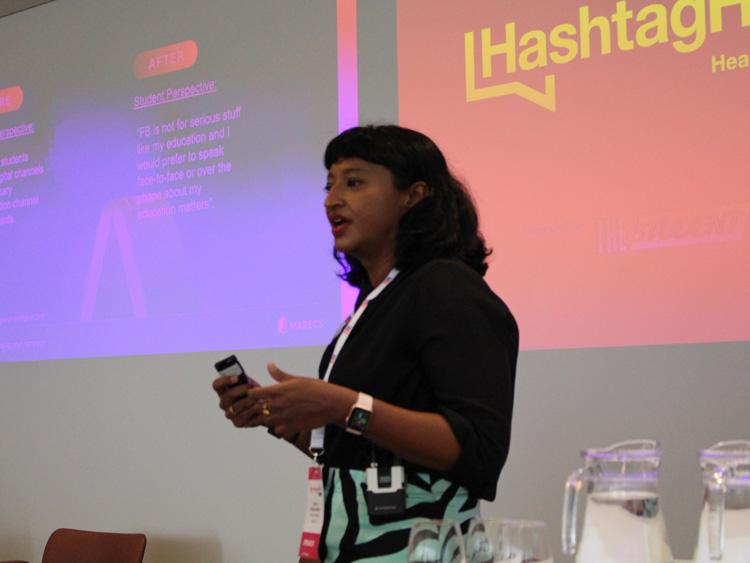Higher education has always been about adapting to change – responding to new research, new technologies and new ways of learning. In 2025, with heightened expectations around diversity, transparency and equality of opportunity, the way we recruit is just as important as the way we teach. It’s less an administrative exercise and more a reflection of our values.
We’ve shown how flexible we can be in the classroom and the lab. Teaching methods are tested and refined to give every student the support they need, and research is pushed beyond traditional boundaries to capture diverse perspectives.
But recruiting talent hasn’t always kept pace. For all the sector speaks about inclusion, many of our day-to-day processes remain rooted in tradition. Candidates come in for an interview, they sit in front of a panel of peers and they’re asked to think quickly under pressure.
Where recruitment can fall short
For a start, this process might favour candidates who perform best under interview conditions. People who can think and speak quickly, and who might more closely mirror the panel in front of them.
But most university roles don’t require instant answers. We research, we draft, we check, we collaborate. So why test candidates in a way that doesn’t fully reflect the reality of the work they’ll do once appointed?
What does inclusive hiring look like?
Some elements of an inclusive recruitment strategy are already commonplace – for example, ensuring a diverse interview panel and giving candidates the option of being interviewed virtually or in person. But we can go further.
Sharing interview questions in advance
Giving candidates the chance to see questions days before their interview helps to level the playing field.
They’re better prepared and able to present thoughtful, well-developed answers without feeling they studied for the wrong exam. Panels can still probe, question and explore candidates’ answers, but the starting point is better for everyone. And for candidates who are neurodiverse, disabled or simply less comfortable under interview pressures, the shift can be transformative.
- The challenge of building a diverse faculty in a world that has turned on diversity
- Creating a culture of belonging with inclusive pedagogy
- Empower minority staff and students to thrive at your institution
For anyone who thinks this might encourage cheating, particularly with the availability of AI tools, the experience is often the opposite. Candidates are encouraged to bring more thorough examples and to be prepared for a useful and much more enlightening discussion. It’s designed to bring out the very best in all candidates.
Rethinking job specifications
Another simple but effective way of making the interview process as inclusive as possible is stripping out the “desirable” criteria from person specifications. Research shows that rather than capture the genuine requirements of the role, desirable criteria can simply reflect the preferences of those already in post.
This puts off applicants who don’t tick every box. By stripping specifications back to the essentials, we can invite a wider and more diverse pool of applicants to put themselves forward.
New approaches to recruiting senior leaders
Senior leaders help set organisational culture and strategy. So why recruit them through processes that test little more than their ability to perform in front of a panel?
A more authentic approach is to replace traditional panels and presentations with a process designed to reveal vision, values and adaptability.
It starts with asking candidates to shape the role themselves. Writing their own job descriptions and sharing a thought-leadership piece, revealing how well they understand the role – its opportunities and challenges – and where they want to take it.
Next, applicants meet colleagues and students, then use those conversations to inform a presentation delivered openly to staff. The final stage is a “fishbowl” discussion with the vice-chancellor or hiring manager, designed to explore thinking rather than trip people up.
This process surfaces qualities traditional interviews often miss – how leaders engage with communities, turn feedback into ideas and set a vision people want to follow. Early adopters report that it feels more authentic, more inclusive and far more relevant to the realities of higher education leadership today.
Rethinking recruitment – what we can learn
A few lessons stand out when it comes to designing more inclusive hiring:
Challenge the default: just because a process is familiar doesn’t mean it’s effective
Small changes matter: sharing questions in advance, or stripping back job specs, can have a big impact
Design for the role: not every job needs the same assessment. Flexibility is key
Fairness lifts quality: adjustments designed with inclusion in mind tend to raise the overall standard
A message to the sector
Inclusive recruitment is about giving every candidate the chance to show what they can do. Done well, it brings in stronger talent, broadens diversity and leads to fairer outcomes.
And it matters. Recruitment is often the first experience people have of a university. If that process is inclusive, fair and thoughtful, it helps shape the culture of the whole institution.
Rachael Cornwall is chief people officer at Buckinghamshire New University.
Buckinghamshire New University was shortlisted for Outstanding Contribution to Equality, Diversity and Inclusion in the 2025 Times Higher Education Awards. A full list of shortlisted candidates can be found here.
If you would like advice and insight from academics and university staff delivered direct to your inbox each week, sign up for the Campus newsletter.




comment